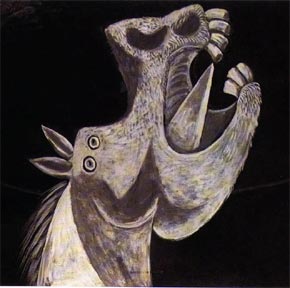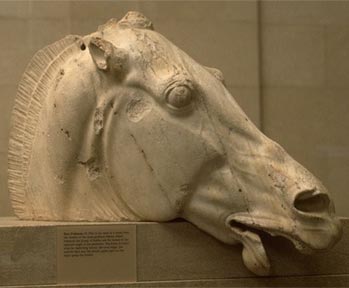

Elements and Principles of Design
Components of an art work
| Subject | the depicted object(s) |
| Form | visual organization |
| Content | impact or meaning |
A horse's head is the subject of both works (below). However, the artists have
used form very differently. Picasso's painting (left) has gestural lines, high
value contrast, and exaggerated proportions to create a highly emotional content.
Conversely, the harmonious rhythms and more naturalistic proportions in the
ancient Greek sculpture create a very different feeling. The differences in
content were created by the differences in form, not the subject matter. The
decisions you make regarding form (type of line and shape; selection of value
and color; size of the work; type of balance, etc.) shape the work's impact
and meaning.
 |
 |
introduction | components | (next) elements of design | principles of design | color | illusion of depth